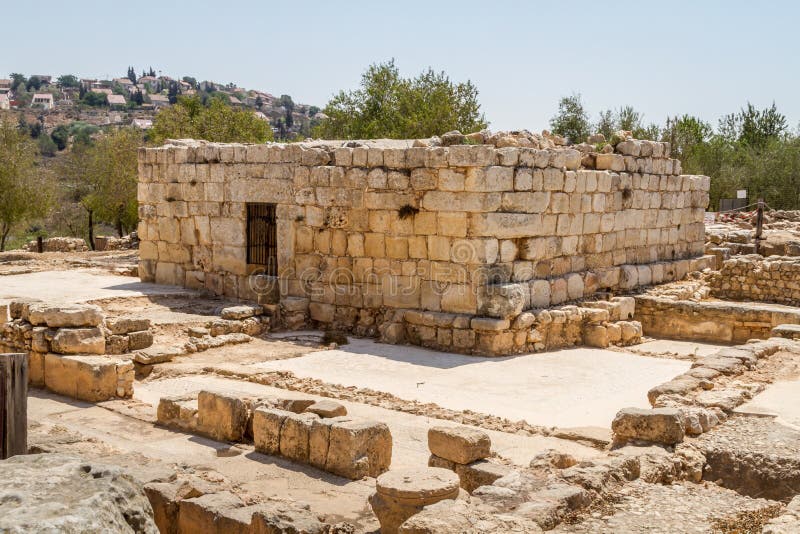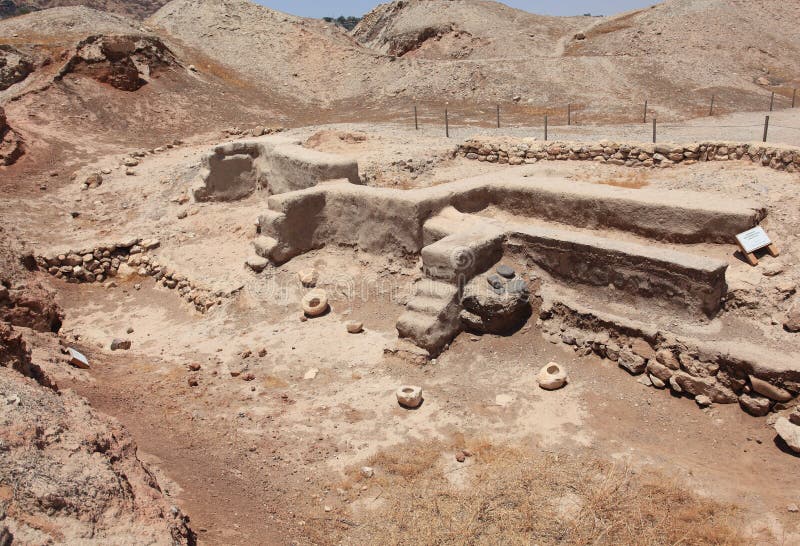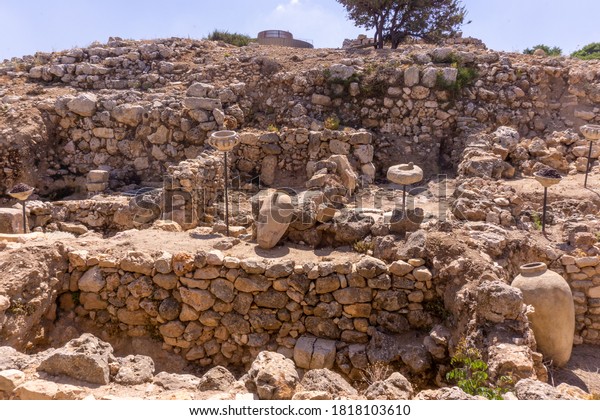Exploring the Shilou Ruins: Insights into China’s Historical Treasures

An Essential Guide to Visiting Shilou Ruins
In This Guide
- An Essential Guide to Visiting Shilou Ruins
- The Rich History and Legends of Shilou Ruins
- Main Highlights: What You Absolutely Can’t Miss
- Planning Your Visit: A Practical Guide
- Tickets: Prices, Booking, and Tips
- How to Get There: A Complete Transportation Guide
- Local Cuisine and Accommodation Nearby
- Frequently Asked Questions
- Final Thoughts on Your Trip
Nestled in the heart of Shaanxi Province, the Shilou Ruins (石峁遗址) stand as a testament to the rich tapestry of early Chinese civilization. Often overlooked by the casual traveler, these ancient remnants offer a rare glimpse into a time when the region was a thriving center of cultural and technological advancement. As you wander through the remnants of this archaeological marvel, you will uncover stories of the past that shaped not only the local landscape but also the broader narrative of Chinese history.
Discovering the Shilou Ruins
The allure of the Shilou Ruins lies not just in their impressive remains but in the layers of history they reveal. Dating back to the Neolithic period, these ruins are believed to be the remnants of a significant settlement that thrived thousands of years ago. The site features well-preserved structures, intricate pottery, and fascinating artifacts that reflect the ingenuity and artistry of ancient Chinese societies.
Why Visit?
-
Historical Significance: The Shilou Ruins are crucial for understanding the evolution of early agricultural societies in China. They provide insights into the social structures, economic systems, and cultural practices that characterized this era.
-
Archaeological Richness: As one of the largest archaeological sites in northern China, Shilou offers an unparalleled opportunity to witness the remnants of ancient architecture and artifacts that date back millennia.
-
Cultural Immersion: Visiting the ruins allows you to connect with China’s deep historical roots and appreciate the continuity of its civilization through the ages.
-
Scenic Beauty: The surrounding landscape enhances the experience, offering picturesque views of rolling hills and lush greenery that invite exploration and contemplation.

Shilou_Ruins.
Tips for Your Visit
- Timing: Aim for a visit during the spring or autumn months when the weather is mild and the scenery is particularly beautiful.
- Guided Tours: Consider joining a guided tour to delve deeper into the historical and cultural contexts of the ruins, as knowledgeable guides can enrich your understanding with captivating stories and insights.
- Prepare for Exploration: Wear comfortable shoes, as the site involves some walking and exploration. Bring water and snacks to enjoy as you take in the sights.
- Photography: The ruins present a unique opportunity for stunning photography, so don’t forget your camera to capture the ancient beauty and intricate details of the site.
Conclusion
The Shilou Ruins offer an extraordinary journey through time, revealing the legacy of ancient Chinese civilization. For travelers eager to explore the depths of history and culture, this site promises an enriching experience that resonates long after your visit. Embrace the chance to step into the past and discover the stories that have shaped this remarkable land.

Shilou_Ruins.
The Rich History and Legends of Shilou Ruins
Unveiling the Rich Tapestry of Shilou Ruins
Nestled in the heart of China’s Shaanxi Province, the Shilou Ruins (石峁遗址) are a treasure trove of history and legend, offering a captivating glimpse into the ancient civilization that once thrived in this region. Dating back over 4,000 years, this archaeological site is believed to be part of the early Yangshao culture, a significant prehistoric society known for its sophisticated agricultural practices, pottery, and settlement patterns.
Historical Significance
The Shilou Ruins encompass remnants of a large settlement complex that showcases the evolution of human habitation and social organization during the Neolithic period. Excavations have revealed well-preserved structures, including circular and rectangular dwellings, burial sites, and communal areas, suggesting a highly organized community. The artifacts unearthed, such as beautifully crafted pottery, stone tools, and jade ornaments, provide profound insights into the daily lives, beliefs, and artistic expressions of the people who inhabited this area.
One of the most compelling aspects of the Shilou Ruins is their connection to the broader narrative of Chinese civilization. This site not only highlights the technological advancements of early agricultural societies but also reflects the complex social hierarchies that emerged as communities grew. The discovery of large storage pits indicates that the inhabitants were adept at managing surplus production, a hallmark of civilization.

Shilou_Ruins.
Legends and Folklore
Beyond its historical significance, the Shilou Ruins are steeped in local legends and folklore that enrich the cultural landscape of the region. One popular legend tells of a great flood that submerged the original settlement, forcing the inhabitants to adapt and rebuild. This tale resonates with themes of resilience and transformation, echoing the broader human experience of overcoming adversity.
Another intriguing narrative involves a mythical creature believed to guard the ruins. Locals speak of a dragon that once soared above the mountains, watching over the settlement and its people. This dragon is said to have bestowed prosperity upon those who respected the land and its resources, highlighting the deep-rooted connection between nature and spirituality within ancient Chinese culture.

Shilou_Ruins.
Visiting the Shilou Ruins
Travelers to the Shilou Ruins can not only explore the well-preserved archaeological features but also engage with the legends that permeate this site. A guided tour often includes discussions about the significance of various artifacts and the stories that have been passed down through generations. Visitors are encouraged to wander through the remnants of the ancient structures, allowing the weight of history to immerse them in the lives of those who once called this place home.
As you stroll through the ruins, take a moment to ponder the stories etched in the very soil beneath your feet. The Shilou Ruins are not just a window into the past; they are a reminder of the enduring spirit of human creativity and survival. Whether you are a history buff, a culture enthusiast, or simply seeking a unique experience, the Shilou Ruins promise an unforgettable journey through time.
In conclusion, the Shilou Ruins stand as a testament to the intricate tapestry of Chinese history, weaving together threads of ancient civilization, folklore, and cultural heritage. As you explore this remarkable site, you will not only uncover the past but also gain a deeper appreciation for the legends that continue to shape the identity of this region.

Shilou_Ruins.
Main Highlights: What You Absolutely Can’t Miss
Discover the Unmissable Highlights of the Shilou Ruins (石峁遗址)
Nestled in the heart of Shanxi Province, the Shilou Ruins (石峁遗址) offer an extraordinary glimpse into ancient Chinese civilization, attracting travelers with a passion for history and culture. This archaeological site, dating back to the late Neolithic period, is a treasure trove of artifacts and structures that tell the story of early human settlements in the region. Here are the must-see highlights that you absolutely cannot miss during your visit:
1. The Stone Structures
At the heart of Shilou are the impressive remnants of stone edifices, which include walls, platforms, and foundations. These structures symbolize the architectural ingenuity of ancient societies. Take time to explore the layout of these buildings, as they provide insights into the social and cultural dynamics of the time. The grand scale of the stone constructions will leave you in awe of the craftsmanship and engineering skills of early Chinese civilizations.

Shilou_Ruins.
2. The Ancient Pottery Collection
Don’t miss the opportunity to view the extensive collection of pottery unearthed from the site. These artifacts, ranging from everyday utilitarian wares to beautifully decorated pieces, illustrate the artistic expression and daily life of the inhabitants. The pottery is not only visually striking but also crucial for understanding the technological advancements and trade practices of the era.
3. The Defensive Walls
The remnants of the defensive walls surrounding the site are a testament to the strategic foresight of its builders. Walking along these ancient fortifications, you can envision the past battles and the efforts to protect the community. These walls, made of large stone blocks, are not only impressive in size but also reflect the societal organization and military strategies of ancient China.

Shilou_Ruins.
4. Cultural Relics and Artifacts
The site is home to numerous cultural relics that provide invaluable insights into ancient rituals, belief systems, and daily life. Visit the onsite museum, where you can immerse yourself in the history through well-preserved artifacts, including tools, weapons, and ceremonial items. Each piece tells a story, deepening your appreciation for the rich tapestry of Chinese heritage.
5. The Surrounding Landscape
The natural beauty surrounding the Shilou Ruins is as captivating as the historical site itself. The scenic backdrop of rolling hills and lush valleys enhances your experience, offering numerous vantage points for photography and reflection. As you wander through this ancient landscape, take a moment to appreciate the harmony between nature and history.

Shilou_Ruins.
6. Guided Tours and Interpretive Programs
To enrich your understanding of the Shilou Ruins, consider joining a guided tour or participating in an interpretive program. Knowledgeable guides will share fascinating stories and historical context, helping you connect the dots between the artifacts and the lives of the people who once inhabited this area. These programs are particularly beneficial for international travelers looking to gain deeper insights into the site’s significance.
7. Local Cuisine and Culture
After exploring the ruins, indulge in the local Shanxi cuisine, known for its rich flavors and unique dishes. Seek out local eateries where you can try specialties like aged vinegar, hand-pulled noodles, and various dumplings. Engaging with the local culture through food will complete your experience and provide a flavorful connection to the region.

Shilou_Ruins.
Final Thoughts
Visiting the Shilou Ruins (石峁遗址) is not just a journey into the past; it’s an opportunity to connect with the foundations of Chinese civilization. Each highlight offers a unique perspective on the lives of those who came before us, ensuring that your exploration is both enlightening and memorable. Prepare to be captivated by the stories etched in stone, and let the echoes of history guide your journey through this remarkable site.
Planning Your Visit: A Practical Guide
Planning Your Visit: A Practical Guide to Shilou Ruins (石峁遗址)
Nestled in the heart of Shanxi Province, the Shilou Ruins stand as a testament to China’s rich history and cultural heritage. Dating back to the late Neolithic period, this archaeological site offers a glimpse into ancient civilization, showcasing unique architectural styles and artifacts that tell the story of the people who once inhabited this area. Whether you are a seasoned historian or a curious traveler, planning your visit to Shilou Ruins can enhance your understanding and appreciation of Chinese culture.

Shilou_Ruins.
Getting There
Location: The Shilou Ruins are located in Shilou County, approximately 100 kilometers from the provincial capital, Taiyuan.
Transportation Options:
– By Car: Renting a car or hiring a taxi is a convenient way to reach the site, allowing you the flexibility to explore the surrounding area.
– By Bus: Frequent bus services operate from Taiyuan to Shilou County, making it accessible for budget travelers. Be sure to check the latest schedules in advance.

Shilou_Ruins.
Best Time to Visit
The ideal time to explore the Shilou Ruins is during spring (April to June) and autumn (September to November). During these months, the weather is generally mild and pleasant, perfect for walking and exploring the outdoor site. Summer can be quite hot, while winter may bring colder temperatures, which could limit your experience.
What to Expect
The Shilou Ruins cover a vast area, with remnants of ancient structures, pottery, and tools scattered throughout the site. You can expect to:
– Explore the Excavated Areas: Wander through the ruins and observe the layout of ancient dwellings and communal spaces.
– Visit the Museum: A nearby museum showcases artifacts from the site, providing context and insight into the lives of the people who once thrived here.
– Guided Tours: Consider joining a guided tour for a more in-depth understanding of the site’s significance. Knowledgeable guides can share fascinating stories and details that you might miss when exploring alone.

Shilou_Ruins.
Practical Tips
- Wear Comfortable Shoes: The terrain can be uneven, so sturdy walking shoes are highly recommended.
- Stay Hydrated: Carry a water bottle, especially if you visit during the warmer months.
- Photography: The ruins provide excellent opportunities for photography, so bring your camera. Just be respectful of any guidelines regarding flash and tripod use.
- Respect the Site: As a protected archaeological site, it’s essential to avoid touching or disturbing any artifacts. Follow all posted rules to help preserve this historical treasure for future generations.
Nearby Attractions
After exploring the Shilou Ruins, consider visiting some nearby attractions to enrich your cultural experience:
– The Great Wall of China (Shanxi Section): Just a short drive away, this section of the Great Wall offers stunning views and hiking opportunities.
– Pingyao Ancient City: A well-preserved ancient city that showcases traditional Chinese architecture and culture, roughly two hours from the ruins.
Local Cuisine
Don’t miss the opportunity to savor local Shanxi cuisine. Be sure to try:
– Shanxi Noodles (刀削面): Famous for their unique texture and taste, these hand-sliced noodles are a must-try.
– Sour Vinegar: Shanxi is renowned for its vinegar, which can enhance any local dish.
Conclusion
Visiting the Shilou Ruins offers a captivating journey into the depths of Chinese history and culture. With proper planning, you can immerse yourself in the stories and remnants of an ancient civilization that shaped the region. By taking the time to respect the site and engage with the local culture, your visit will undoubtedly be a memorable highlight of your travels in China.
Tickets: Prices, Booking, and Tips
When planning your visit to the Shilou Ruins (石峁遗址), understanding the ticketing process, prices, and some handy tips will enhance your experience at this remarkable site, steeped in ancient Chinese history.
Ticket Prices and Booking
-
Admission Fee: Entry to the Shilou Ruins is typically free for visitors. However, some special guided tours or workshops may have associated costs, usually ranging from ¥30 to ¥100 (approximately $5 to $15 USD).
-
Guided Tours: If you’re interested in a more in-depth experience, consider booking a guided tour. Prices vary based on the tour length and inclusions, generally falling between ¥100 and ¥300 (about $15 to $45 USD). Ensure to check the official site or local tourism offices for current rates and availability.
-
Audio Guides: For those who prefer to explore at their own pace, audio guides may be available for rent. Expect to pay around ¥20 (about $3 USD) for a comprehensive audio experience that brings the ruins’ history to life.
Booking Tips
-
Advance Reservations: While walk-ins are often welcome, it’s advisable to book guided tours in advance, especially during peak tourist seasons (spring and autumn). Many tour companies offer online booking options, making it convenient for international travelers.
-
Local Guides: Hiring a local guide can significantly enhance your experience. They provide valuable insights into the historical context of the ruins and share stories that you might miss on your own. Look for licensed guides at the entrance or through reputable local tour agencies.
Best Times to Visit
-
Seasonal Considerations: The best time to visit the Shilou Ruins is during the spring (April to June) and autumn (September to November) when the weather is mild and the surrounding landscape is particularly beautiful. Summer can be hot and humid, while winter may bring chilly temperatures.
-
Avoiding Crowds: For a more peaceful experience, consider visiting on weekdays or early in the morning. This allows you to fully appreciate the site’s tranquility and historical significance without the hustle and bustle of larger tour groups.
Practical Tips for Your Visit
-
Wear Comfortable Footwear: The ruins cover a substantial area, and many paths can be uneven. Comfortable shoes will help you navigate the site with ease.
-
Bring Water and Snacks: While there may be some vendors nearby, it’s wise to carry water and light snacks, especially if you plan on exploring the area for several hours.
-
Respect the Site: As a UNESCO World Heritage site, it’s vital to respect the ruins and surrounding nature. Stay on designated paths and refrain from touching or climbing on the ancient structures.
-
Photography: The Shilou Ruins offer stunning photo opportunities. Early morning or late afternoon light can provide the best conditions for photography, so plan your visit accordingly.
Conclusion
The Shilou Ruins (石峁遗址) are not just a destination; they are a gateway to understanding the depths of Chinese history and culture. By preparing adequately with the right information about tickets, prices, and practical tips, you’ll ensure a memorable and enriching visit to this historic site. Embrace the journey, and let the whispers of the past guide you through the ancient stones.
How to Get There: A Complete Transportation Guide
Getting to the Shilou Ruins (石峁遗址)
Visiting the Shilou Ruins offers a fantastic opportunity to step back in time to one of ancient China’s most significant archaeological sites. Located in the Shanxi province, specifically in the Shilou County, this remarkable ruin is accessible through various modes of transportation. Here’s how to get there seamlessly, ensuring that your journey is as enriching as the destination itself.
By Air
Nearest Airports:
– Taiyuan Wusu International Airport (TYN): Approximately 130 kilometers away, this is the closest major airport. It offers both domestic and limited international flights.
– Datong Yungang Airport (DAT): Located around 120 kilometers from the ruins, this airport is ideal for travelers coming from larger Chinese cities.
Transportation from the Airport:
– Taxi: The most convenient option. Expect a fare of around 300-400 RMB to get to Shilou County.
– Car Rentals: Various rental services are available at the airport. It’s advisable to book in advance.
By Train
Train Stations:
– Shilou Railway Station: This is the nearest train station, about 10 kilometers from the ruins.
– Taiyuan Railway Station: A major hub for high-speed trains across China. You can take a train from cities like Beijing, Shanghai, or Xi’an.
Travel Tips:
– Purchase Tickets: It is recommended to buy your train tickets online or at the station in advance to secure your preferred travel times.
– Local Transport: From Shilou Railway Station, taxis are readily available. You may also find local buses that can drop you closer to the site.
By Bus
Long-Distance Buses:
– Taiyuan to Shilou: Regular buses run between Taiyuan and Shilou County, with a journey time of about 2-3 hours. The buses depart from the Taiyuan Long-distance Bus Station.
– Cost: A ticket will typically cost around 50-70 RMB.
Local Buses:
– Once in Shilou County, look for local buses that specifically head towards the Shilou Ruins. They are a budget-friendly option for covering the last stretch.
By Car
Driving Directions:
– If you prefer to drive, rent a vehicle at the airport or in Taiyuan. The drive from Taiyuan to the Shilou Ruins takes approximately 2 hours.
– Route: Take the G20 highway, then follow the signs to Shilou County. The roads are generally well-maintained, making for a pleasant drive through the scenic Shanxi landscape.
Parking:
– There are designated parking areas near the ruins, but it’s wise to arrive early, especially during peak tourist seasons.
Tips for Travelers
- Language: English signage may be limited, so having a translation app or basic Mandarin phrases can be helpful.
- Cellular Service: Prepare for limited reception in some areas, so download maps or guides beforehand.
- Local Customs: Familiarize yourself with local customs and etiquette, especially when visiting historical sites.
By planning your transportation effectively, you can focus on immersing yourself in the rich history and culture that the Shilou Ruins have to offer. Enjoy your journey into the past!
Local Cuisine and Accommodation Nearby
When exploring the historical treasures of the Shilou Ruins (石峁遗址), enriching your experience with local cuisine and comfortable accommodations can greatly enhance your journey. Located in Shanxi Province, these ancient ruins not only offer a glimpse into China’s rich past but also serve as a gateway to authentic culinary delights and inviting places to stay.
Culinary Delights Near Shilou Ruins
- Local Shanxi Noodles (山西刀削面)
- Where to Try: Local noodle shops in nearby towns
-
Description: Indulge in the famous “dao xiao mian,” or knife-cut noodles, which are hand-sliced and served with a variety of savory broths and toppings. This dish is a must-try for any visitor wishing to experience the heart of Shanxi cuisine.
-
Sour Vinegar (山西老陈醋)
- Where to Try: Specialty vinegar shops or local restaurants
-
Description: Known as one of China’s finest vinegars, Shanxi aged vinegar can be sampled in various dishes or enjoyed as a dipping sauce. Don’t miss the chance to visit a local shop and learn about the production process.
-
Baked Pancake with Minced Meat (肉饼)
- Where to Try: Street vendors in the vicinity
-
Description: This savory pancake, filled with seasoned minced meat, is a popular street food. Enjoy it fresh off the grill, paired with a cup of local tea.
-
Dishes Featuring Local Ingredients
- Where to Try: Family-run restaurants
- Description: Many local eateries pride themselves on their farm-to-table approach. Look for dishes made with seasonal vegetables and locally sourced meats, which reflect the region’s agricultural heritage.
Comfortable Stays Nearby
- Shilou International Hotel (石楼国际酒店)
-
Description: Offering modern amenities and comfortable rooms, this hotel is an excellent base for exploring the Shilou Ruins. With a restaurant on-site serving local cuisine, guests can enjoy both comfort and convenience.
-
GreenTree Inn (锦江之星)
-
Description: This budget-friendly option provides clean and cozy accommodations. The hotel is well-located, making it easy to access the ruins while offering complimentary breakfast and Wi-Fi.
-
Local Guesthouses
-
Description: For those seeking an authentic experience, consider staying in a local guesthouse. Many offer traditional decor, home-cooked meals, and an opportunity to engage with local families, providing a deeper understanding of Shanxi culture.
-
Boutique Hotels in Nearby Cities
- Where to Stay: Pingyao or Taiyuan
- Description: If you’re willing to travel a bit further, boutique hotels in the ancient city of Pingyao or the capital of Shanxi, Taiyuan, offer unique accommodations rich in history and charm. These cities are renowned for their architecture and cultural significance.
Final Thoughts
Exploring the Shilou Ruins is not just about the history etched in stone; it’s also about tasting the flavors that have shaped the culture over centuries. By indulging in the local cuisine and enjoying comfortable accommodations, your visit will be enriched with memories that linger long after you leave. Whether you’re savoring a bowl of hand-pulled noodles or resting in a charming guesthouse, every moment contributes to a deeper appreciation of this remarkable region.
Frequently Asked Questions
Frequently Asked Questions about Shilou Ruins (石峁遗址)
1. What are the Shilou Ruins?
The Shilou Ruins, located in Shanxi Province, China, are remnants of a significant ancient city that date back to the Zhou Dynasty. This archaeological site showcases impressive earthen walls and structures, believed to have been a vital center for trade and culture during its time.
2. How do I get to the Shilou Ruins?
The Shilou Ruins are accessible by various means of transportation. The nearest major city is Taiyuan, which is approximately 150 kilometers away. Travelers can take a bus or hire a taxi from Taiyuan to reach the site. Local guides are also available for those interested in a more in-depth exploration.
3. What is the best time to visit the Shilou Ruins?
The ideal time to visit the Shilou Ruins is during the spring (April to June) and autumn (September to November) months. The weather during these seasons is generally mild and pleasant, making it perfect for outdoor exploration.
4. Are there guided tours available at the Shilou Ruins?
Yes, guided tours are available and highly recommended for those interested in learning more about the historical and cultural significance of the site. Local guides can provide valuable insights and context about the ruins, enriching your visit.
5. What should I wear when visiting the Shilou Ruins?
Comfortable clothing and sturdy footwear are recommended for visiting the Shilou Ruins. The site involves some walking and possibly uneven terrain, so wearing appropriate attire will help ensure an enjoyable experience. Don’t forget to bring sun protection such as hats and sunscreen, especially during warmer months.
6. Is there an entrance fee to visit the Shilou Ruins?
Yes, there is a nominal entrance fee to access the Shilou Ruins. The fee contributes to the preservation and maintenance of the site. It’s advisable to check for current pricing and opening hours before your visit, as these may vary seasonally.
7. Can I take photographs at the Shilou Ruins?
Absolutely! Photography is encouraged at the Shilou Ruins, as the site offers stunning views and fascinating structures. However, be respectful of any posted guidelines regarding photography, especially if guides or staff are present.
8. Are there facilities available at the Shilou Ruins?
Basic facilities such as restrooms and informational signage are available at the site. While there may not be extensive amenities, visitors should plan accordingly by bringing water and snacks, especially if they plan to spend several hours exploring the ruins.
Visiting the Shilou Ruins offers a unique glimpse into China’s ancient history and culture, making it a must-see for travelers interested in archaeology and historical exploration.
Final Thoughts on Your Trip
As you prepare to leave the Shilou Ruins (石峁遗址), take a moment to reflect on the profound history and cultural significance that envelops this remarkable site. Nestled in the heart of Shanxi Province, the ruins offer a unique glimpse into the power and sophistication of ancient Chinese civilization, a civilization that has shaped the very essence of modern China.
Key Takeaways from Your Visit:
-
A Journey Through Time: Walking among the remnants of ancient architecture and urban planning, you have traversed the corridors of history, gaining insight into the lives of the people who once thrived here. The intricate stonework, the layout of the city, and the artifacts unearthed tell stories of a prosperous era that flourished long ago.
-
Cultural Significance: The Shilou Ruins are not just a testament to architectural prowess; they represent the cultural and political heart of the region during the 3rd to 5th centuries AD. Understanding this context enriches your appreciation of the site and its role in the broader tapestry of Chinese history.
-
Natural Beauty: Surrounded by stunning landscapes, the ruins provide a serene environment for exploration and contemplation. Take a moment to appreciate the interplay between nature and history, as the lush scenery enhances the ancient stones’ timeless allure.
-
Engagement with Local Culture: Your visit likely offered opportunities to engage with local traditions and communities. Whether through sampling regional delicacies or participating in cultural performances, you have woven your experience into the fabric of this living history.
Final Reflections:
As you depart from the Shilou Ruins, consider the stories that these stones hold and the shared heritage that connects you to this ancient civilization. Whether you are a history enthusiast, a culture seeker, or simply a curious traveler, the Shilou Ruins offer an enriching experience that goes beyond sightseeing.
Take with you the lessons of resilience, innovation, and the enduring human spirit that echo through the ages. Your journey here is not merely a visit to a site; it is a connection to the past that helps illuminate the path forward. Embrace the memories, share your stories